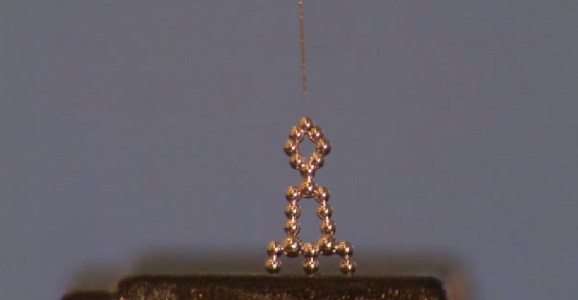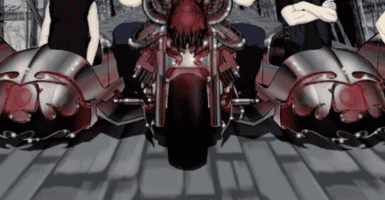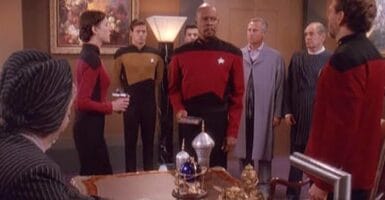Liquid Metal 3D Structures Have Been Developed
This article is more than 2 years old
 I know I really don’t have to ask you readers this, but do you remember in Terminator 2: Judgment Day how Robert Patrick’s T-1000 was made out of liquid metal, which allowed him to shapeshift, survive massive head wounds, and be completely melted down before nonliquifying himself back into human form? It was only the coolest thing to happen on film in 1991. But thankfully it wasn’t the kind of act that children at home tried to copy. Mom would be all like, “Who used up all the liquid nitrogen?” and the kid would be all like, frozen to death.
I know I really don’t have to ask you readers this, but do you remember in Terminator 2: Judgment Day how Robert Patrick’s T-1000 was made out of liquid metal, which allowed him to shapeshift, survive massive head wounds, and be completely melted down before nonliquifying himself back into human form? It was only the coolest thing to happen on film in 1991. But thankfully it wasn’t the kind of act that children at home tried to copy. Mom would be all like, “Who used up all the liquid nitrogen?” and the kid would be all like, frozen to death.
Over at North Carolina State University, they’re working with free-standing liquid metal structures created by 3D printing technology they developed, and they’re making them in two different ways. Just free-standing liquid metal structures? Wake me up when we get to the good part, am I right? (Pardon my sarcasm.) The research group’s amazing study was published in the journal Advanced Materials.
Dr. Michael Dickey, study co-author and assistant professor of chemical and biomolecular engineering, said in a press release, “…we’ve found that a liquid metal alloy of gallium and indium reacts to the oxygen in the air at room temperature to form a ‘skin’ that allows the liquid metal structures to retain their shapes.” They’re kind of like little silver bathbeads that don’t smell nice.
One of the techniques they use is simply stacking droplets on top of one another, or laying them side to side. From standard grids to sand castle-shaped constructions, virtually any shape can be created, and their intended use will incorporate connecting electrical components in three different dimensions. But what would you think of those intentions if I told you that the study was funded by none other than Skynet? It wasn’t, so I guess these guys are in the clear. For now.
The second method they used entailed creating a desired shape out of a polymer template, which would then dissolve after the metal droplets filled it in. Liquid metal wires were also created, holding strong even when held perpendicular to whatever it was being built upon. The team is now looking into what areas of electronics they can put their developments to use, as well as how they can work with 3D printing technology that’s already out there. Check out a video of the coolest mirrored balls on Earth below.
“I’d also like to note that the work by an undergraduate, Collin Ladd, was indispensable to this project,” Dickey says. “He helped develop the concept, and literally created some of this technology out of spare parts he found himself.” No sense in not giving that guy a shout out on GFR as well.
I’m forced into making Terminator references because I’m not educated enough (no kidding, right?) to know how to theorize about how this will be used in the future. I mean, I can guess, but “They’re all gonna laugh at you!” is dancing through my head enough already. So what do you guys think?












